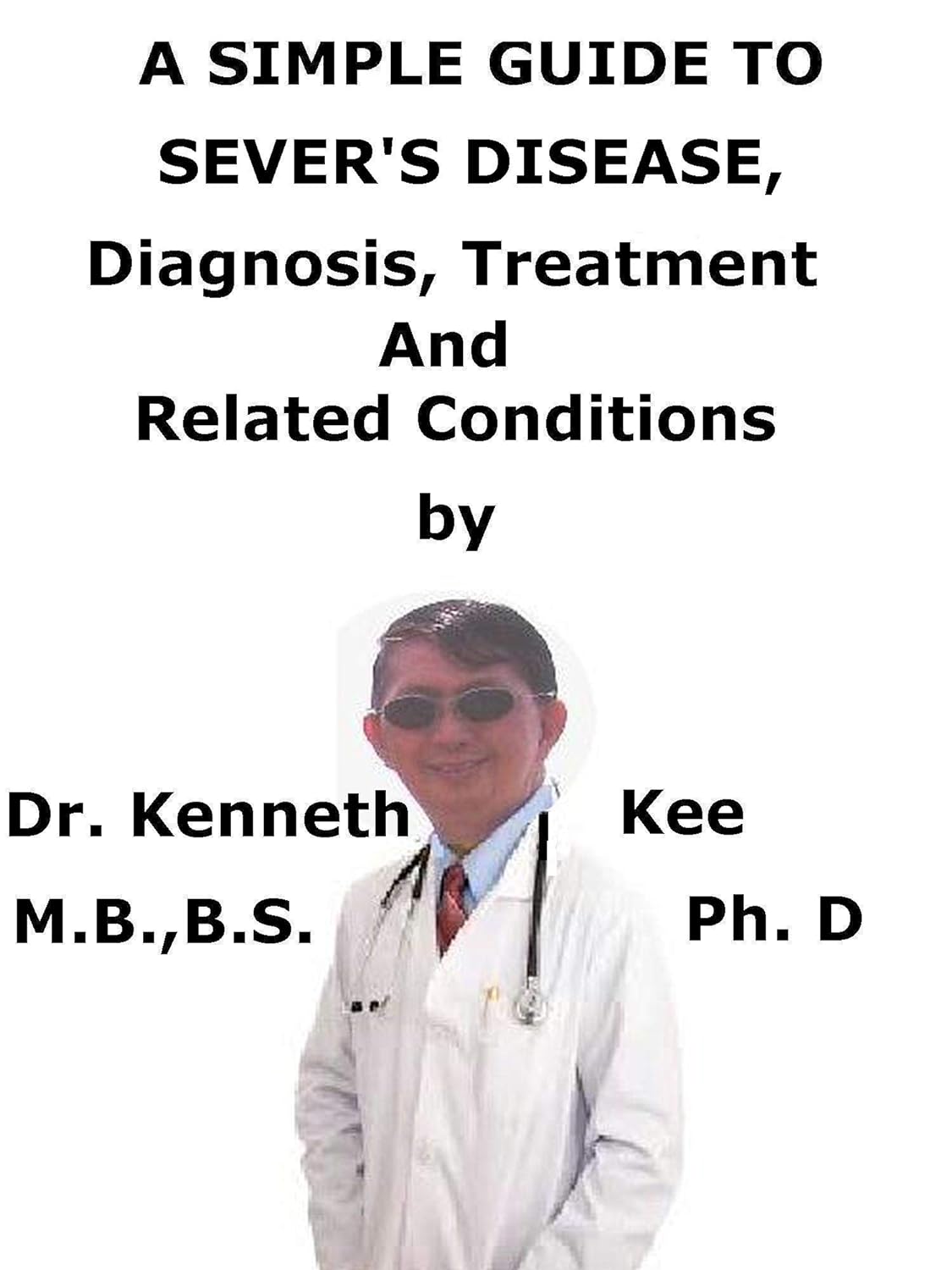
This book describes Sever’s Disease, Diagnosis and Treatment and Related Diseases
Sever’s disease (termed calcaneal apophysitis) is a swelling with irritation of the growth plate in the heel.
The growth plate is a stratum of cartilage near the end of a bone where most of the bone’s growth happens.
The growth plates are vulnerable to trauma.
It is weaker and more at danger for injury than the rest of the bone.
When a child is fully grown, the growth plates will close and are substituted by solid bone.
Until this happens, the growth plates are weaker than the nearby tendons and ligaments
Sever’s disease is one of the most frequent causes of heel pain in growing children and adolescents.
Sever’s disease most often happens during a period of rapid growth in active adolescent patients between 9 and 12 years of age and is the most frequent cause of heel pain in this specific age group.
Symptoms can be one-sided, but up to 60% of cases can manifest with bilateral pain.
Sever’s disease happens more often in males, manifesting most often at a median age of 12 years for males and 11 years for females.
The most often sports affected in these cases need repetitive running and jumping such as in basketball, soccer, track, cross-country, and gymnastics.
Risk factors for Sever’s disease are:
1. General risk factors for overuse injury such as long or year-round activities,
2. Poorly fitting or worn out footwear, or
3. Poor training mechanics.
Additional biomechanical factors such as poor heel cord flexibility, pes cavus, pes planus, genu varum, or forefoot varus can affect patients to develop the disorder
Cause
Sever’s disease happens during the growth spurt of puberty.
During a growth spurt, the bones, muscles, and tendons develop at different rates.
The muscles and tendons can grow to be tight, pulling on the growth plate in the heel.
Activities and sports drag on the tight muscles and tendons, damaging the growth plate.
This damage causes the pain of Sever’s disease.
Less often, Sever’s disease can happen from standing too long, which places constant pressure on the heel.
Symptoms
Sever’s disease normally produces pain or tenderness in one or both heels
It can cause:
1. Swelling and redness in the heel
2. Stiffness in the feet when first waking up
3. Limping, or walking on tiptoes
4. Pain when the heel is squeezed on both sides
Painful symptoms are often induced by running, jumping, and other sports-related activities
Medical examination is necessary for tenderness over calcaneal insertion of Achilles tendon and a positive squeeze test.
Diagnosis is medical and does not need imaging studies except to exclude other diseases.
Treatment of Sever’s disease is eventually a self-limiting disorder that recovers with maturation and closure of the apophysis.
The treatment for Sever’s disease directs on decreasing pain and swelling.
This normally needs restricting exercise activity until the child can enjoy activity without discomfort or significant pain afterwards.
In some patients, the rest from activity is needed for several months, accompanied by a strength conditioning program.
A child with Sever’s disease could try to cut down or avoid all activities that produce pain.
Walking and non-weight bearing exercises (like swimming) are normally acceptable.
In most cases of Sever’s disease, simple measures will alleviate pain and permit a return to daily activities such as:
1. Rest,
2. Over-the-counter medicines,
3. A change in footwear, and
4. Stretching and strengthening exercises
The doctor may advise extra treatment methods, such as:
1. Heel pads
2. Heel cord stretch
3. Stretching exercises for Achilles tendon
4. Ice before and after sports
TABLE OF CONTENT
Introduction
Chapter 1 Sever’s Disease
Chapter 2 Causes
Chapter 3 Symptoms
Chapter 4 Diagnosis
Chapter 5 Treatment
Chapter 6 Prognosis
Chapter 7 Plantar Fasciitis
Chapter 8 Achilles Tendinitis
Epilogue
